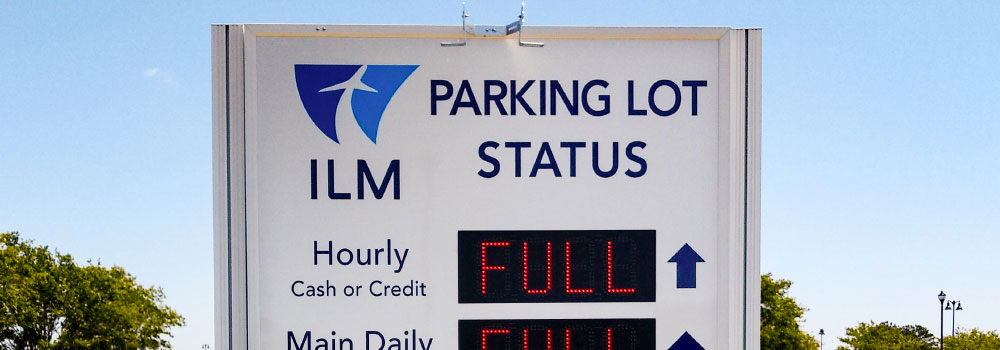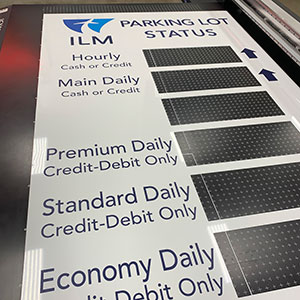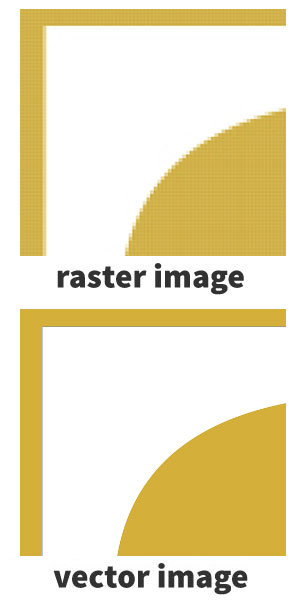
Your logo says a lot about your company — what your brand represents, your capabilities, to whom you cater, and how customers and prospects perceive you, among other things. But even the strongest branding with the right logos, fonts, color schemes, and typography can be foiled by using the wrong image file for marketing materials, including digital, physical, and signage. What's the proper format for images, you ask? It's a vector image, and here's why you need them for your graphics initiatives.
What is a Vector Format Image?

Vector files are computer-generated artwork, graphics or images made on points, lines, and curves based on equations instead of solid colored square pixels. When these points, lines, and curves are connected, they create shapes and polygons that allow images to be scaled infinitely larger while remaining high-quality. Vector images can come in different formats; the three most popular are:
Encapsulated PostScript (EPS)
As it's one of the most common vector image files, EPS is considered the standard format for vector graphics, and almost all graphics software will support it. Most vector graphics software support EPS, including Adobe Illustrator (see below). If you have other file types, such as AI, it's best if you also have an EPS to cover all bases.
Adobe Illustrator Artwork (AI)
Adobe Illustrator is very popular software for creating and editing graphics, and its native file format is Adobe Illustrator Artwork files, or simply AI. This is a modified version of the EPS format, and it is widely used, but not quite universal. Because of this, owning Adobe Illustrator isn't required to open AI as it can be opened by other programs, such as CorelDraw or Inkscape.
Scalable Vector Graphic (SVG)
Historically, SVG files were ignored by graphic designers because they were not widely supported. However, it is becoming increasingly popular as more and more software and browsers are supporting it, and it is now the World Wide Web Consortium (W3C) vector graphic standard that can support any screen resolution.
Raster Graphics vs. Vector Format

Raster-based graphics are what most people think of when they think of images. They contain pixels instead of points, lines, and curves. Nearly every image you download is likely to be raster-based, including PNG, JPG, GIF, and other file types. While most software supports raster-based graphics, common programs, such as Microsoft Word, aren't able to read and utilize vector format images.
So why use vector images if they are less common? It all comes down to the main difference between the file types — pixels vs. points — that demonstrate vector images as the superior choice. Here are three reasons it's imperative to use vector format images instead of raster-based graphics when designing and creating your illuminated signage.
1 – They're Infinitely Scalable
Of all vector images' advantages, scalability is the clear number one. The image can be scaled up infinitely without losing quality with these files. The image will retain its sharpness regardless of how many times it's zoomed in on. Contrarily, when zooming in on raster images, you begin to see pixels which equates to a loss in image sharpness. This is why vector format graphics are preferable for signage; they stay crisp at all sizes, especially when printed, and ensure your company and brand maintain a professional image.
2 – They're Editable
Editing vector images is quite easy. Often, projects require multiple revisions, and with vector format images, it's easy to make amendments — color changes, move pieces, etc. — to existing graphics. This puts another tool in graphic designers' toolboxes when they need to help put their clients' best foot forward.
3 – They Have No Fixed Resolution
Vector images intrinsically have no fixed resolution, making them non-dependent on image resolution for them to be displayed. Instead, they use the device's resolution on which they're being showcased, perhaps an RGB sign, to display the crystal clear image.
For marketing materials and digital signage, there is no debate: vector format images are the best choice. Signal-Tech is the leading LED sign company for financial institutions, parking facilities, highway, traffic, and rail authorities, medical facilities, and industrial applications. We can create custom, illuminated signage to improve your branding and help you stand out from the competition. Contact us today to learn more about all of our digital and illuminated signage capabilities that can enhance your business.


